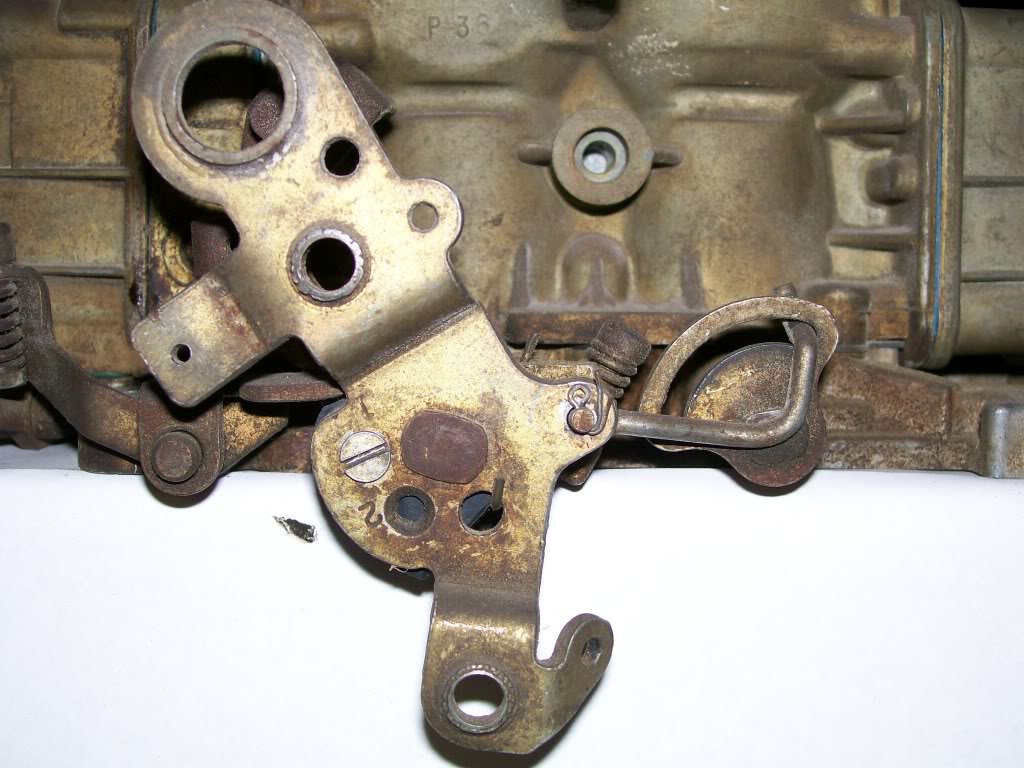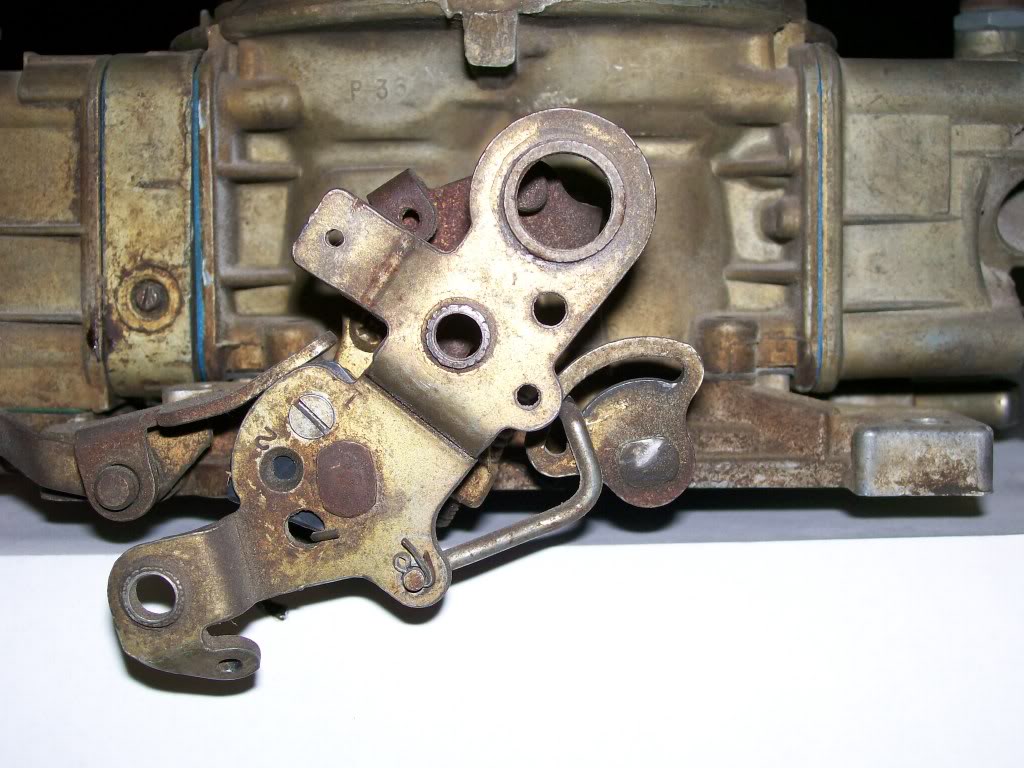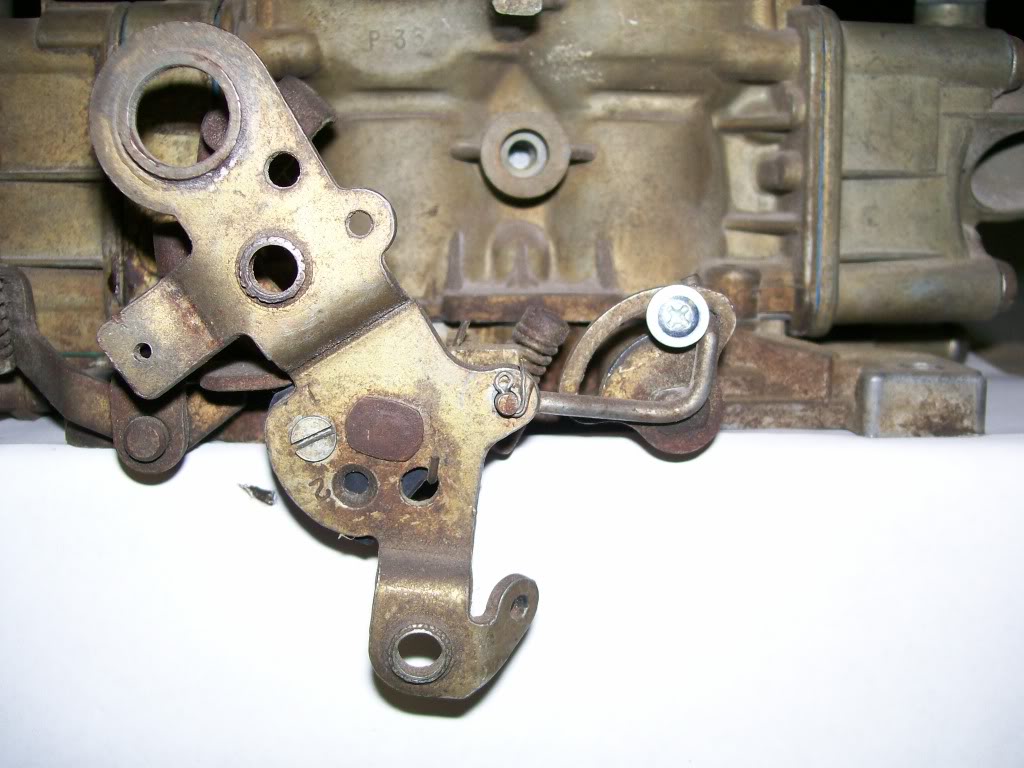You must be logged in to rate content!
4 minute(s) of a 620 minute read
2-28-2012
Good questions. especially the one concerning what size carb for the motor.
I could yack and yack, but do what I did. Go to Holley.com. There will be a size topic to click. It will run you through a bunch of questions concerning weight, transmission, engine size, rpm range, and I think gear ratio. At the end it will recommend a size. I think there is also a chart that goes by engine size and rpm that gets you close also. The right size carb is the first place to start. Trying to dial in a wrong size carb never gets the most out of your vehicle.
I'm gonna stick with the vacuum secondary carb for now. Last post I tried to be very clear that the linkage on this carb only allows the secondaries to be opened by the vacuum diapham, the linkage itself does not do the opening.
In the next picture I have the carb in the idle position. Follow a piece of linkage that goes from the primary to the secondaries. This linkage hooks into a slot, and not a hole.

In this next picture, the carb is in the full throttle position. Notice the linkage has moved forward in the slot, but has not moved the shaft one bit. With this linkage moved forward, it now allows the vacuum diaphram to turn the secondary shaft from the other side. If I had the throttle at half throttle, the linkage would have moved less, thus limiting how far open the diaphram could open the secondaries. If there was a vacuum source going to the vacuum diaphram, it would be able to open the secondaries to the point where the slot would touch the linkage.

Why use a vacuum diaphram instead of just locking the linkage to the secondary shaft?
This type of carb is built to be sensative to the needs of the engine at any given time. The vacuum diaphram gets it's vacuum source from the amount of air passing through the primaries. Once the demand of the engine requires and is capable to handle the extra air/fuel into the cylinders, then and only then does the secondaries open.
I can compare the concept to a 3000 pound drag car vs a 5000 pound truck hauling a 2000 pound trailer. Both have a 4 barrel carb, but the demand is extremely different.
Open the truck throttle wide open and if the secondaries opened immediatly, the truck would have less power. The opening of all 4 barrels open would drop the intake vacuum and disturb the whole fuel/ air mixture.
On a drag car, it's gonna be at 5 or 6 thousand rpm in a second or two, the fuel/ air demand is immedate, the intake vacuum raises as fast as the rpm so 4 barrels open immediatly in needed. This is where the mechanical secondaries are needed.
Instead of talking about a "hot rod" fix, I'm gonna post a picture. Do not do this, I repeat, do not do this. This is something that is done, but accually creates more problems. This is only for demonstration, not for usage.

Notice the screw, and yes, if I opened the throttle, the secondaries will open. This is similar to how mechanical secondaries work, the linkage doesn't allow the secondaries to open, it forces the secondaries open.
Other than the possibility of this screw causing the linkage to bind, there is another issue that it creates when doing this to a vacuum secondary carb. Not so much a safety issue, but a performance issue.
Scooter402, if you know the answer, go ahead and answer. If anyone else has an idea, post it, if your thinking it, someone else might be thinking the same thing.

Ultimate classic truck right there
Posted by CCmyVW on 12/26/20 @ 4:17:42 PM